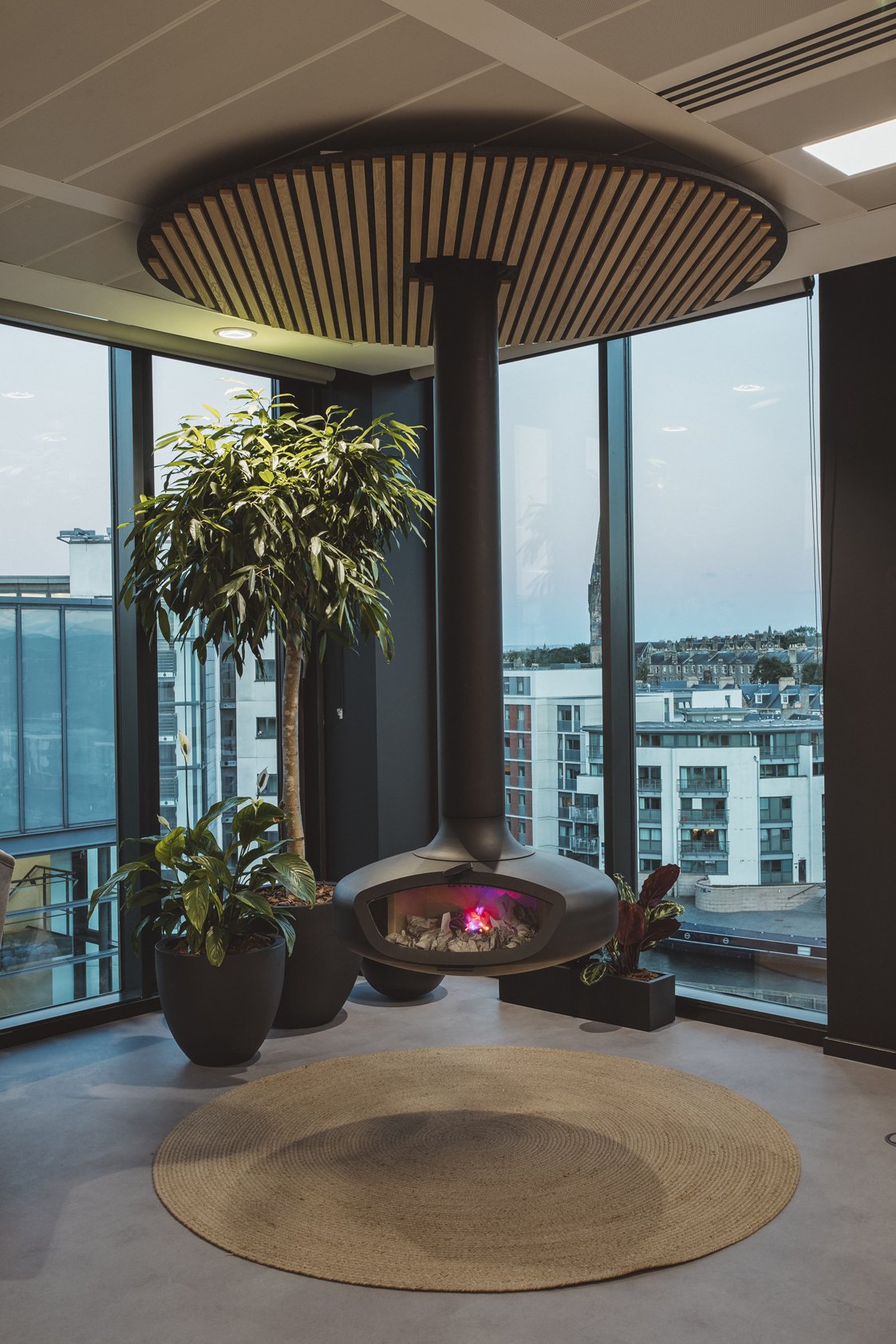How do you design to incite a feeling? We spend five days of our week in the workplace, and it impacts our psychology massively. When we walk into a space, how do we design to excite that sense of awe. For Becky Turner, workplace psychologist for Claremont Group Interiors, they have conducted research to examine how we replicate that feeling of “oooh” in the workplace.
‘Image courtesy of Bureau Workspace’ www.yourbureau.com
For many it is the sense of sense of connection that drives people to the office, what else will encourage the workforce the consider the cost of the commute whether it’s financial or time? Claremont researched office-based workers to find out what types of things invite people back to the office. With an overall low occupancy at 30% businesses are feeling the pinch when it comes to workforce presence.
That feeling of connection to other living beings, comes back to Biophilia and Fromm’s expounding of being connected, that love of life, and sense of freedom. It’s a complex thing.
How do you design to incite a feeling? Becky talks about colour theory, employee journey, brand experience, and how you drive people into the space for those spontaneous connections. Create a variety of spaces and of course the benefit of Biophilic Design is so widely researched that if we create a variety of spaces, to help increase employees mood we are going to have healthier and happier and productive workforce.
Becky describes how important it is to create choice, and freedom to explore in a workplace, so people feel a sense of control, but it is vitally important to ALSO so important, to ensure that the organisation empowers that control. Micro choices are a way forward too.
Human centric design of course, also ensure that we take into consideration, job roles, personalities, neurodiversity and physical challenges mean that people are going to use the workplace differently.
Overall, Becky is optimistic, there is a progression towards consideration to the human experience in the workplace, and that people are not just commodities. There is so much data to show, that Biophilic Design has a great impact on bottom line performance. Space can impact wellbeing, happiness and healthiness, mentally physically and socially.
We also speak about activity based workspaces, and offering prospect and refuges areas, as we would also experience and seek out in nature itself, spaces where you can gain information and also have shelter and protection. Businesses are understanding that we need different workspaces for different tasks. Looking at the Five Factor Model – OCEAN (Openness, Conscientiousness, Extroversion, Agreeableness, and Neuroticism), it is important that we all design with everyone in mind. We need to put safe spaces in, defining these for refuge, so it’s important when we come back to the office, that we use those principles found within nature, to create a similar landscape to satisfy that need we have internally.
To connect with Becky visit: https://www.linkedin.com/in/becky-wilkins-claremontgi/ or download a recent report click here: https://www.claremontgi.com/balanced-workplaces/
SEE HER SPEAK AT THE WORKPLACE SHOW, book FREE tickets HERE
buy our magazine from our website and if you like our podcast and would like to support us in some way, you can buy us a coffee if you’d like to, thank you x
Credits: with thanks to George Harvey Audio Production for the calming biophilic soundscape that backs all our podcasts.
Did you know our podcast is also on Audible, Amazon Music, Spotify, iTunes, YouTube, Stitcher, vurbl, podbay, podtail, and most if not all the RSS feeds?
Facebook https://www.facebook.com/journalofbiophilicdesign/
Twitter https://twitter.com/JofBiophilicDsn
LinkedIn. https://www.linkedin.com/company/journalofbiophilicdesign/
Instagram https://www.instagram.com/journalofbiophilicdesign


